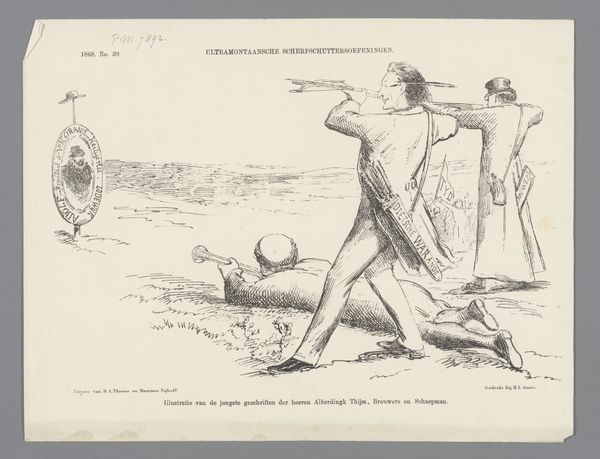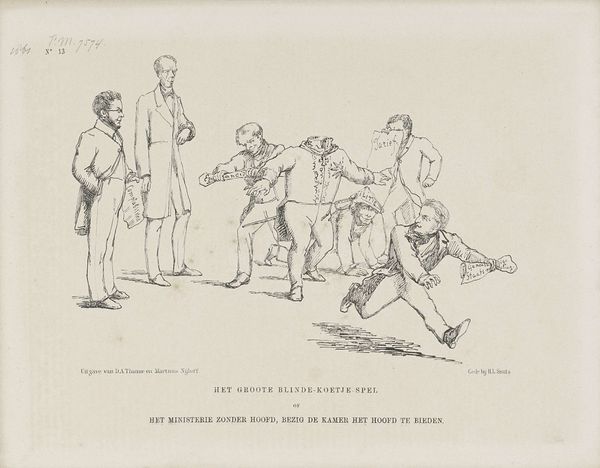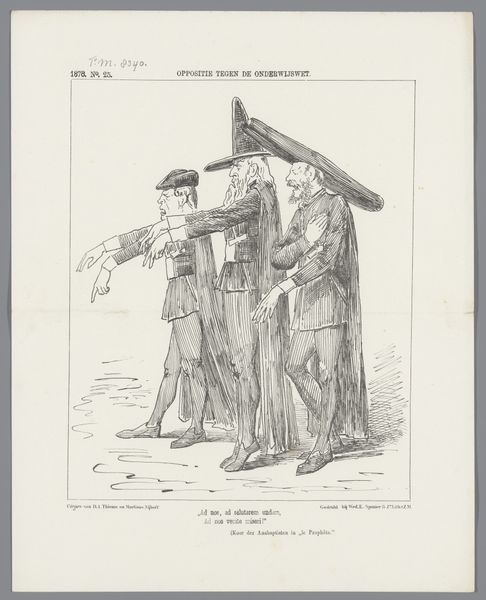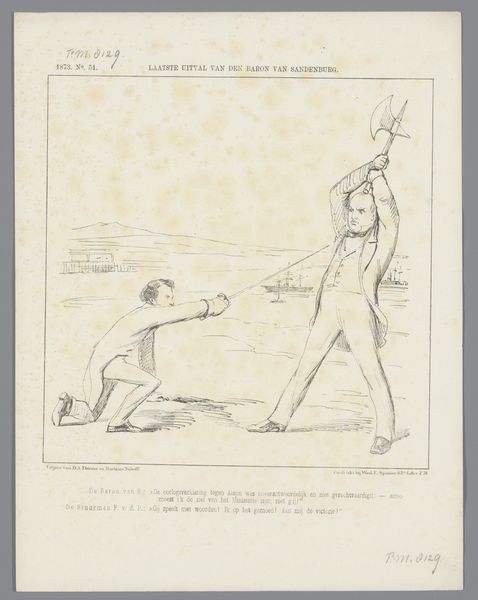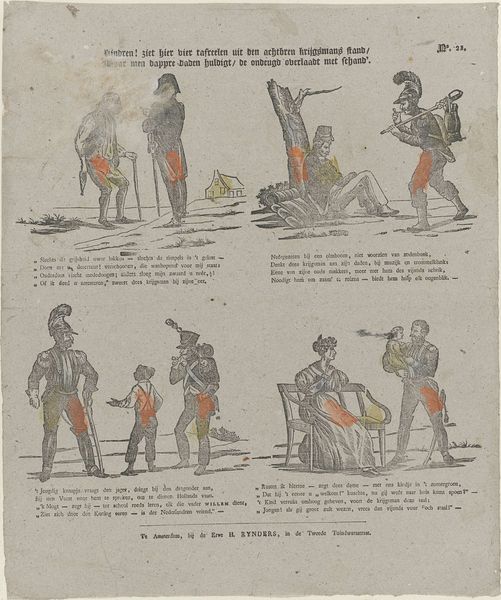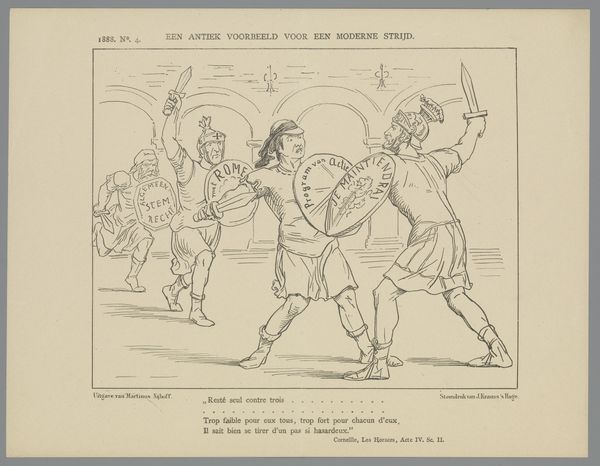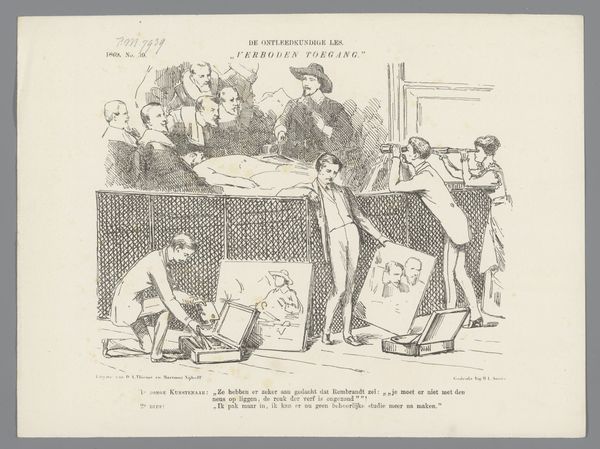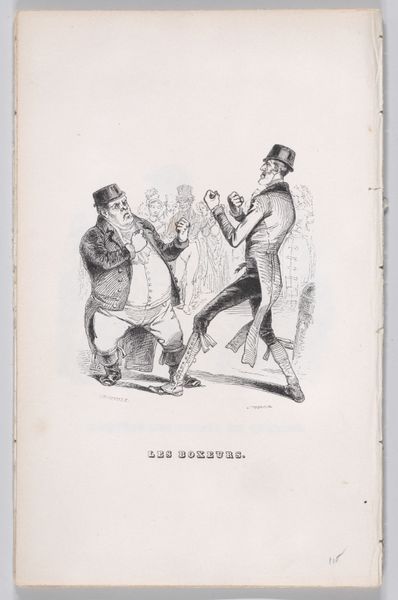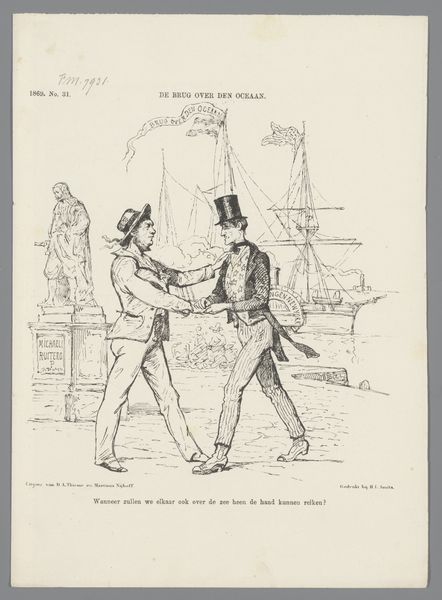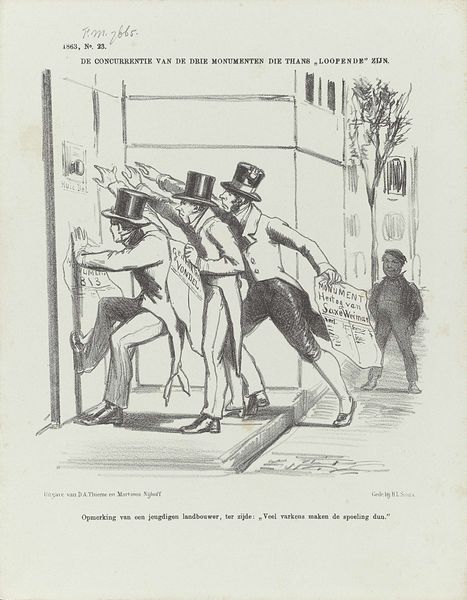
Utrechtse maskerade van 1851: Rederijkers in 1500 1851
0:00
0:00
print, engraving
# print
#
caricature
#
genre-painting
#
history-painting
#
engraving
Dimensions: height 477 mm, width 620 mm
Copyright: Rijks Museum: Open Domain
Curator: This whimsical engraving, "Utrechtse maskerade van 1851: Rederijkers in 1500," caught my eye. It's by Augustinus Jacobus Bernardus Wouters, dating from 1851, and resides in the Rijksmuseum. What's your first impression? Editor: Comical! It feels almost carnivalesque, despite the swords. The linear hatching and slightly awkward poses lend it an air of humorous awkwardness, like a skit gone delightfully wrong. Curator: I agree. I find it intriguing how Wouters employs historical costuming and weaponry to seemingly satirize a contemporary debate. Perhaps it hints at entrenched ideologies battling it out. The piece is subtitled “Theological Tournament”, further solidifying the satirical framing of this image as a symbolic showdown of ideological battles. Editor: Absolutely. Given its date, it seems reasonable to situate this piece within broader European social and political shifts. Could this "tournament" reflect debates about colonialism, religious freedom, or emerging class struggles in the Netherlands at the time? I feel that its context would enrich our understanding of this image as it relates to these social conflicts. Curator: Indeed, viewing it through that lens unlocks a deeper dimension. The choice to depict the figures in older garb reminds me of historical pageants which in my mind often had this thin veil between paying tribute and gently poking fun. Wouters manages to inject levity and caricature without necessarily diminishing the gravity of what he depicts. I see him gently commenting on an ongoing societal narrative. Editor: Precisely! And thinking of that theatricality, I’m prompted to examine its accessibility to audiences of the time. Its symbolism might seem niche or obtuse to contemporary audiences unless provided context surrounding 19th century sociopolitical ideologies and their expression. But thinking critically and acknowledging historical precedents and contemporary discourses allows for a more engaged appreciation of both what’s rendered visually and what’s consciously or unconsciously repressed through visual representation. Curator: What a lovely interplay of history, humor, and the eternal battle of ideas we found embedded in this witty print. Editor: Yes, a fine example of how caricature provides not only amusement, but incisive socio-political critique.
Comments
No comments
Be the first to comment and join the conversation on the ultimate creative platform.
